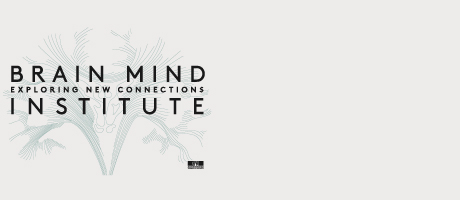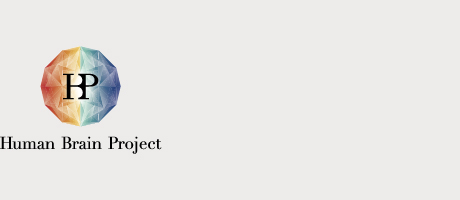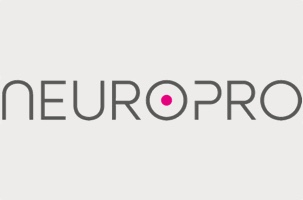The exhibition allowed businesses and research organisations to share their work with an international audience of experts in brain science and healthcare, as well as other entrepreneurs, business people, potential investors and the broader public. In particular, there was an opportunity for innovative start-ups to present their ideas to the scientific and business communities and seek funding or useful partnerships.
Exhibitors' profiles


ATLAS Neuroengineering is a spin-off company of Imec (Leuven, BE) and IMTEK, University of Freiburg (DE) and originates from the successful European FP6 NeuroProbes project. ATLAS Neuroengineering has developed a system platform using an implantable device to record individual neurons for scientific understanding of cerebral systems and for the monitoring treatment of neurological disease.

Creaholic is a Swiss innovation-house, founded in 1986 by Elmar Mock, one of the co-inventors of the Swatch. Today, Creaholic is composed of a multidisciplinary team, having successfully completed more than 700 projects, originated 180 patent families and received numerous industry awards.
The disruptive and "hands-on" approach of Creaholic, enabling clients to improve their products and systems, to discover new technology applications and business opportunities, has been leveraged across various industrial fields from medical to packaging, and automation to watches. Creaholic works with leading industry partners as well as incubating its own ventures via licensing and

Frontiers is at the forefront of building this ultimate Open Science platform. By taking publishing entirely online, Frontiers drive innovations and develop new technologies to make peer-review more efficient and transparent, provide impact metrics for articles and researchers, is the first – and only – to merge open-access publishing with a research network platform, Loop, to catalyse collaboration and research dissemination and we popularize research to the public, including kids. Frontiers' mission is to increase the reach and impact of articles and their authors.
Frontiers is today one the largest and fastest-growing open-access publishers, receives millions of monthly page views, received the ALPSP Gold Award for Innovation in Publishing in 2014, has publishing agreements with many universities, and collaborates with Nature Publishing Group, Scientific American, Digital Science, OpenAire, CrossRef, OASPA, COPE, Jacobs Foundation, and others to advance Open Science worldwide.
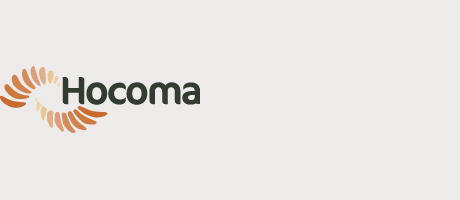
Hocoma was set up in 2000, as a spin-off of the Swiss University Hospital Balgrist. The company currently employs more than 170 people at its headquarters in Volketswil near Zurich (Switzerland) and at its subsidiaries in the USA, Singapore and Slovenia. Hocoma is the global market leader for the development, manufacturing and marketing of robotic and

The International Brain Research Organization (IBRO) is a union of neuroscience organizations with the aim to promote and support neuroscience training and collaborative research around the world. More than 80 international, national and regional scientific organizations constitute IBRO's Governing Council, which together with the five IBRO Regional Committees launch the educational programs that reach young neuroscientists in need of support and assistance. In addition, IBRO has partnerships with like-minded federations of scientific societies to identify priorities and help bridge gaps in knowledge, investment and resources in the field of the brain and related diseases, from development to aging.
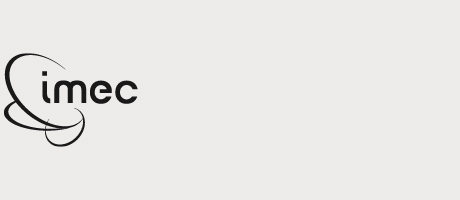
Nanoelectronics research center
Imec leverages its scientific knowledge with the innovative power of its global partnerships in ICT, healthcare and energy. Imec’s highly sensitive, intelligent, miniaturized, ultra-low power, wearable sensors enable comfortable, continuous, reliable and long-term monitoring and management of health in ambulatory conditions and daily-life activities.

INCF (International Neuroinformatics Coordinating Facility) develops and maintains database and computational infrastructure for neuroscientists. Software tools and standards for the international neuroinformatics community are being developed through the INCF Programs, which address infrastructural issues of high importance to the neuroscience community.
Currently there are 4 program areas: Digital Brain Atlasing, Ontologies for Neural Structures, Multi-scale modeling, and Standards for Data Sharing. More than 180 leading international researchers are involved in the programs. A cloud-based data federation - the INCF Dataspace - has been developed to enable collaboration between researchers through the sharing of neuroscience data, text, images, sounds, movies, models and simulations.

iniLabs invents, produces and sells neurotechnological products. It has a unique combination of technology and expertise in neuromorphic hardware design. Its products are in use at over 70 organizations including Fortune 500 companies and top-ranked universities worldwide, and it maintains a close R&D collaboration with the Institute of Neuroinformatics at the University of Zurich and the ETH Zurich. The flagship product of iniLabs, the Dynamic Vision Sensor, mimics human retinal function to achieve unprecedented performance in speed, dynamic range and power consumption. iniLabs partners with application developers in many in fields including robotics, automotive, industrial vision and healthcare. A recent highlight is the development of a novel sensor for enabling visually impaired persons to navigate independently, with intuitive usability and long battery life.

Invest Saint Lucia's dedicated team of professionals offer guidance and direction to new and established investors who are interested in pursuing investment opportunities in Saint Lucia.
These services include:
- Providing general and sector specific information
- Facilitating investor site visits and providing customised information packages
- Matching investors with sector-specific projects
- Introducing potential investors to local industry
- Business startup facilitation
- Identifying sites for business development
- Aftercare Client Support
Invest Saint Lucia manages seven industrial estates which house 26 factory shells in industrial parks strategically located throughout the island's economic hubs. This allows Invest Saint Lucia to provide the best rates for leasing property and factory spaces thus making business set-up easier.

MindMaze is a
NeuroPro is a Swiss medical research, design and commercialisation company that brings together cutting-edge mobile computing and innovative signal analysis methodologies to create user-friendly, real-time solutions for consumers, researchers and healthcare professionals.
NeuroPro’s mission is to harness the benefits of the digital and mobile revolutions and apply them to the problems of neuroscience to radically improve the way we acquire, understand and utilise brain signal data. NeuroPro’s unique technologies leverage proprietary systems and patents furthered by strategic partnerships with prominent research and technology providers.
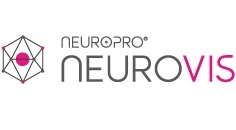
NeuroVIS is software which combines EEG signal viewing and analysis with 3D visualisation of brain activity. NeuroVis provides a platform for capturing complex data and mapping information in highly visual and engaging formats. NeuroVIS has been developed by NeuroPro for the visualisation and analysis of EEG and ECG signals across multiple
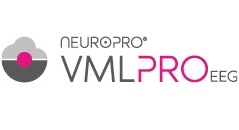
The VMLpro (Virtual Mobile Laboratory) system is at the core of many NeuroPro technologies. The system pairs the power and flexibility of cloud computing with the ease of use of mobile and internet technologies, providing neuroscience researchers and practitioners with data-focused application platforms such as VMLproEEG. These applications are built around three core features:
- On-demand: real-time scalability – storage and computational resources size up dynamically to meet users’ intensive processing requirements in a use-it-when-you-need-it scheme that cuts processing cost and time significantly.
- Collaboration: users, irrespective of geographical location, choose to share access to data, analysis, and research insights within a virtual environment that sets focus on the scientific conversation and minimises distractions due to data logistics.
- Extensibility: researchers design and implement their custom analysis workflows in an ad-hoc manner, thereby controlling costs and risks inherent to rigid data analysis procedures.
VMLpro systems leverage the latest developments in cloud computing technology to provide highly scalable and secure environments that foster efficient collaboration on patient diagnosis and patient monitoring or on clinical trials irrespective of geographical location.
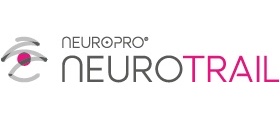
NeuroTrail is a wireless EEG headset designed to simplify the acquisition of EEG making it possible for non-experts to record EEG quickly and easily. Created to adapt to individual head shapes, NeuroTrail is modular, ergonomically-designed,
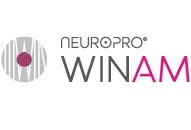
WiNAM is built on the simple hypothesis that our brains function rhythmically. When brain rhythms are disrupted, the brain malfunctions. The latter state could be a seizure. WiNAM is a highly intelligent algorithm that enables the real-time detection and prediction of epileptic seizures. It applies multi-dimensional pattern detection on EEG signals in search of out-of-rhythm elapses in time, frequency, and special domains, and uses smart machine learning to distinguish harmony from discord.
The ultimate objective of WiNAM is to be able to automatically predict seizures. This prediction would bring countless life-changing benefits to epilepsy patients ranging from


WISE Srl is developing a genuinely new generation of implantable leads for neuromodulation and
The electrodes are produced through a proprietary innovative technology: the Supersonic Cluster Beam Implantation (SCBI), which allows the metallization of stretchable polymers. The SCBI technology has been protected by patents in Europe, USA, Israel, Canada, India, Japan and Korea. Alongside the IP, WISE holds a strong know-how on the technology and its implementation.

W Science is a private company that provides resources, technology and leadership to support initiatives that enable the integration and packaging of science with information technologies that advance personal healthcare and personal lifestyles.

Reality Substitution is a new method for creating virtual reality (VR) to share true experiences. The Reality Substitution Machine makes it possible to share moments of life in real time or to re-experience events from a first person perspective rather than via an avatar, moving beyond 3D gaming experiences. Cognitive neuroscience is the key: scientific understanding of how we consciously experience reality reveals how to trick our brain with VR technologies.
Applications include:
- cognitive and behavioural therapy, offering therapists optimal conditions for the progress and rehabilitation of their patients;
- education, allowing teachers to build learning environments mixing reality and pedagogical content;
- the film industry, allowing movie makers to record, edit, and tell stories that people can live through; and
- virtual tourism, creating the experience of travelling to China with a friend without leaving home.
Keep in touch
Subscribe for the latest announcements and events from The Brain Forum.

